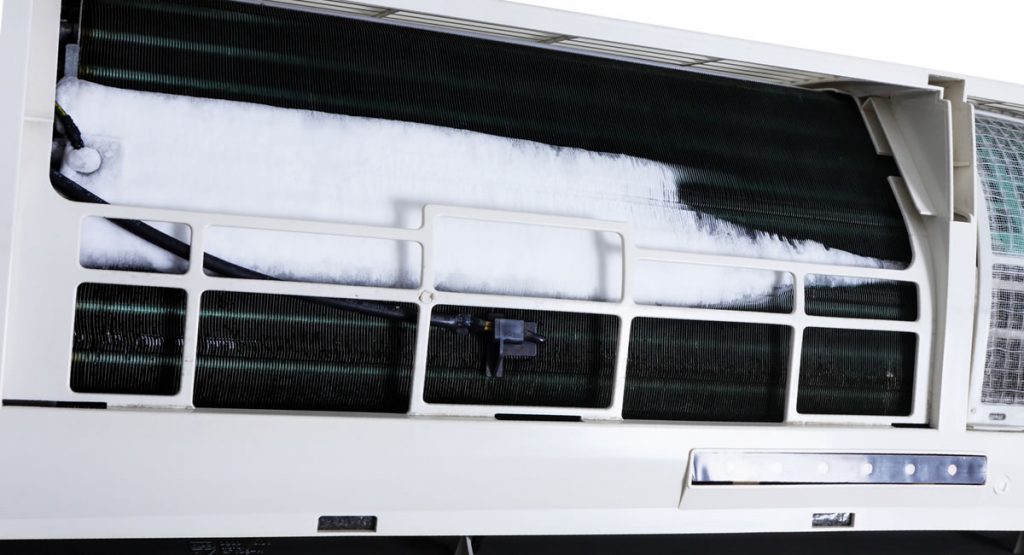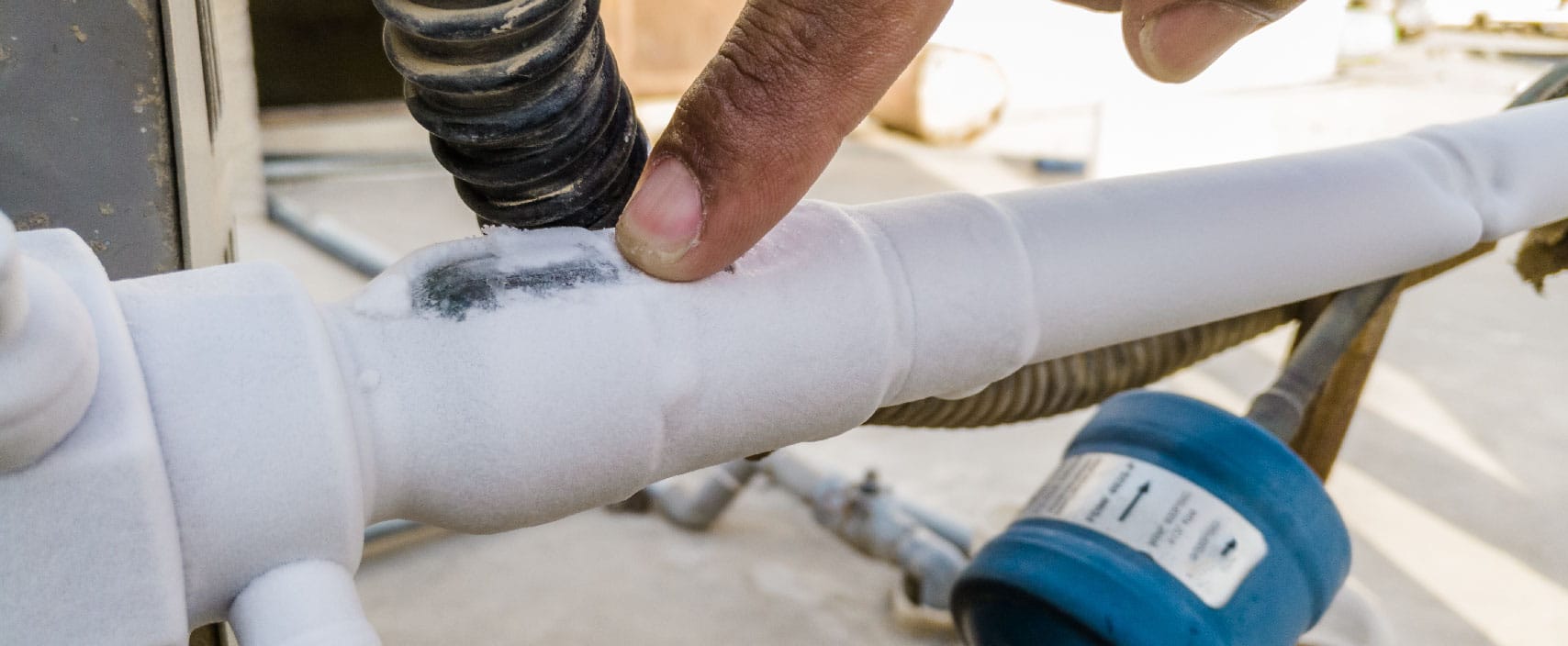Troubleshooting a Frozen AC Pipe - Effective Fixes for House Air Conditioning Systems
Troubleshooting a Frozen AC Pipe - Effective Fixes for House Air Conditioning Systems
Blog Article
What are your thoughts about Air Conditioner Frozen? How To Fix your Frozen AC Line?

Intro
Discovering that your air conditioner pipeline is frozen can be concerning, particularly during hot summertime when you depend on your air conditioning system the most. Recognizing what to do in such a situation is critical to prevent additional damages to your air conditioning system and guarantee your comfort inside your home.
Recognizing the Causes
Numerous aspects can contribute to the cold of an a/c pipeline. Comprehending these causes can assist you attend to the issue efficiently.
Lack of Airflow
One common root cause of a frozen AC pipe is inadequate air flow. When the air movement over the evaporator coil is limited, it can trigger the coil to go down below freezing temperature, causing ice formation on the pipeline.
Reduced Refrigerant Levels
Insufficient cooling agent degrees in your AC system can also result in an icy pipeline. Low cooling agent degrees can cause the pressure in the system to drop, leading to the cold of wetness on the evaporator coil.
Winter Conditions
In colder environments, freezing temperature levels outside can contribute to the freezing of AC pipes. If your air conditioner system is not correctly shielded or if there are leakages in the ductwork, chilly air can infiltrate the system, creating the pipeline to freeze.
Dirty Air Filters
Unclean or blocked air filters can limit airflow in your air conditioner system, leading to different problems, including a frozen pipeline. It's essential to replace or cleanse your air filterings system on a regular basis to make sure proper air movement and prevent ice buildup.
Signs of a Frozen AC Pipe
Acknowledging the indicators of an icy a/c pipeline is essential for timely activity.
Decreased Airflow
If you observe a substantial decrease in airflow from your vents, it might suggest a frozen pipe.
Ice Buildup on the Pipe
Noticeable ice buildup on the refrigerant line or the evaporator coil is a clear indicator of an icy air conditioner pipe.
Weird Sounds from the Unit
Unusual noises, such as hissing or bubbling, coming from your air conditioner system can indicate that there's ice existing on the pipeline.
Immediate Actions to Take
When faced with a frozen AC pipeline, it's essential to act quickly to stop additional damage to your cooling system.
Shutting off the air conditioning
The primary step is to shut off your a/c unit to avoid the system from running and intensifying the problem.
Checking for Blockages
Check the area around the indoor unit for any kind of blockages that may be blocking air movement, such as furnishings or drapes.
Thawing the Pipe
You can use gentle approaches like putting towels taken in warm water around the frozen pipe to aid thaw it gradually.
Preventive Measures
Taking preventive measures can aid prevent future incidents of a frozen a/c pipe.
Routine Maintenance Checks
Schedule regular upkeep contact an expert HVAC technician to ensure that your air conditioning system is running efficiently.
Transforming Air Filters
On a regular basis change or clean your air filters to stop air flow constraints and preserve optimum performance.
Shielding Exposed Pipes
If your a/c pipelines are revealed to cold temperature levels, consider protecting them to prevent freezing during winter season.
Looking For Professional Help
If DIY methods fall short to fix the issue or if you're not sure about exactly how to proceed, it's ideal to seek assistance from a certified HVAC professional.
When DIY Methods Fail
If your attempts to thaw the pipe or address various other problems are not successful, it's time to employ an expert.
Relevance of Hiring a Professional HVAC Technician
A licensed HVAC professional has the competence and devices necessary to identify and fix issues with your a/c system securely and efficiently.
Conclusion
Taking care of an icy AC pipe can be an irritating experience, but recognizing how to react can aid decrease damages and restore comfort to your home. By recognizing the reasons, recognizing the indications, and taking prompt activity, you can successfully address the problem and protect against future occurrences.
What to Do If Your AC Line Is Frozen
Make Sure All Supply and Return Air Vents Are Open
If you notice problems with airflow, the first thing you should do is check your supply and return vents. Supply vents distribute clean, conditioned air throughout your home. As this air becomes stale, it’s pulled into the return vent, where it’s reconditioned before being sent back out through the supply vent.
When these vents are closed, air won’t flow in the home. Before examining your AC, check the vents in every room and ensure they’re all open.
Check for a Dirty Air Filter
Another possible cause of limited airflow is a dirty air filter. Your air conditioner’s filters catch elements you don’t want to breathe in, such as dirt and dust. Over time, filters can become clogged, ultimately blocking air from flowing in and out. The lack of airflow can then cause the entire coil to freeze and will completely restrict any air from moving through it. The AC may need to be powered off for one to two days to allow the coil to thaw after replacing the filter to allow proper functioning of the unit. This debris can also accumulate on your AC’s evaporator coil, requiring a more serious repair. In general, air filters should be cleaned regularly (about every two weeks).
Assess Your Outdoor Unit
In addition to checking your AC, assessing the outdoor unit is a good idea. Also known as the condensing unit, it works with your interior unit to release heat outside. An issue with the outdoor unit can result in rising internal temperatures.
Overgrown Shrubs or Clogged Leaves
From leaves and twigs to shrubs and debris, there’s no shortage of outdoor elements that can accumulate around your condensing unit. When these elements get lodged inside the unit, they can block airflow. Fortunately, removing the blockage can solve the problem.
Sounds of a Broken Fan
Shrubs and leaves aren’t the only things that can impede your outdoor unit’s airflow. If the fan is broken, the unit won’t be able to properly get rid of heat — which means the internal temperature won’t go down. First, make sure the fan is spinning. If it is, check for the following sounds of a broken fan:
Buzzing Rattling Screeching Hissing Clicking Preventative Measures
Nobody wants to deal with a frozen AC line. In addition to causing problems with your air conditioner, they require professional repairs. On the bright side, there are preventative measures you can take to help ensure this issue doesn’t arise in the first place.
https://www.coopergreenteam.com/blog/what-to-do-if-ac-line-frozen

Do you appreciate reading about Have a Frozen AC Line? Here’s How to Fix It? Put a review down the page. We'd be pleased to hear your feelings about this content. In hopes to see you back again in the future. Do you know somebody who is fascinated by What Causes AC Pipes To Freeze?? Be sure share it. Thank-you for taking the time to read it.
Customer Reviews Report this page